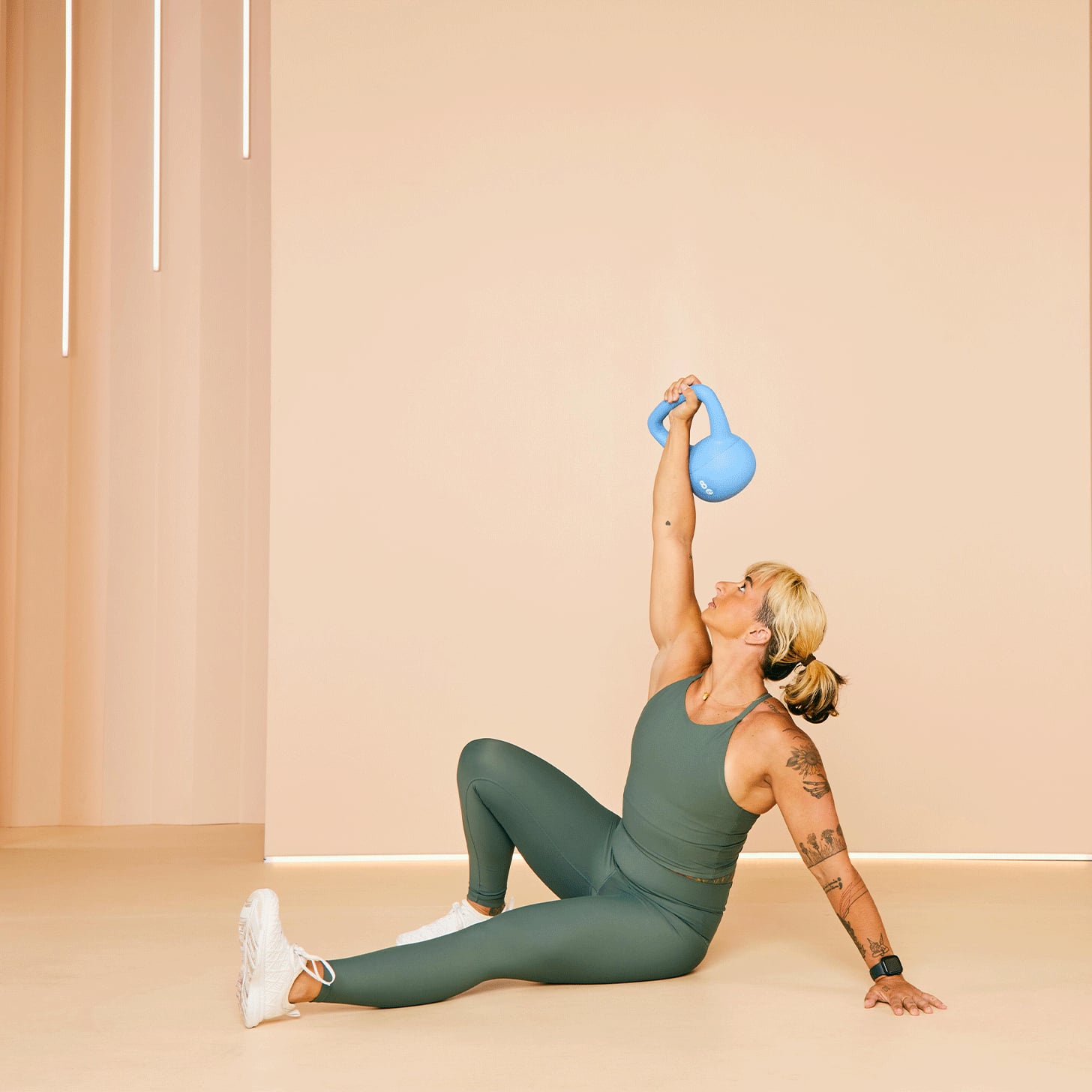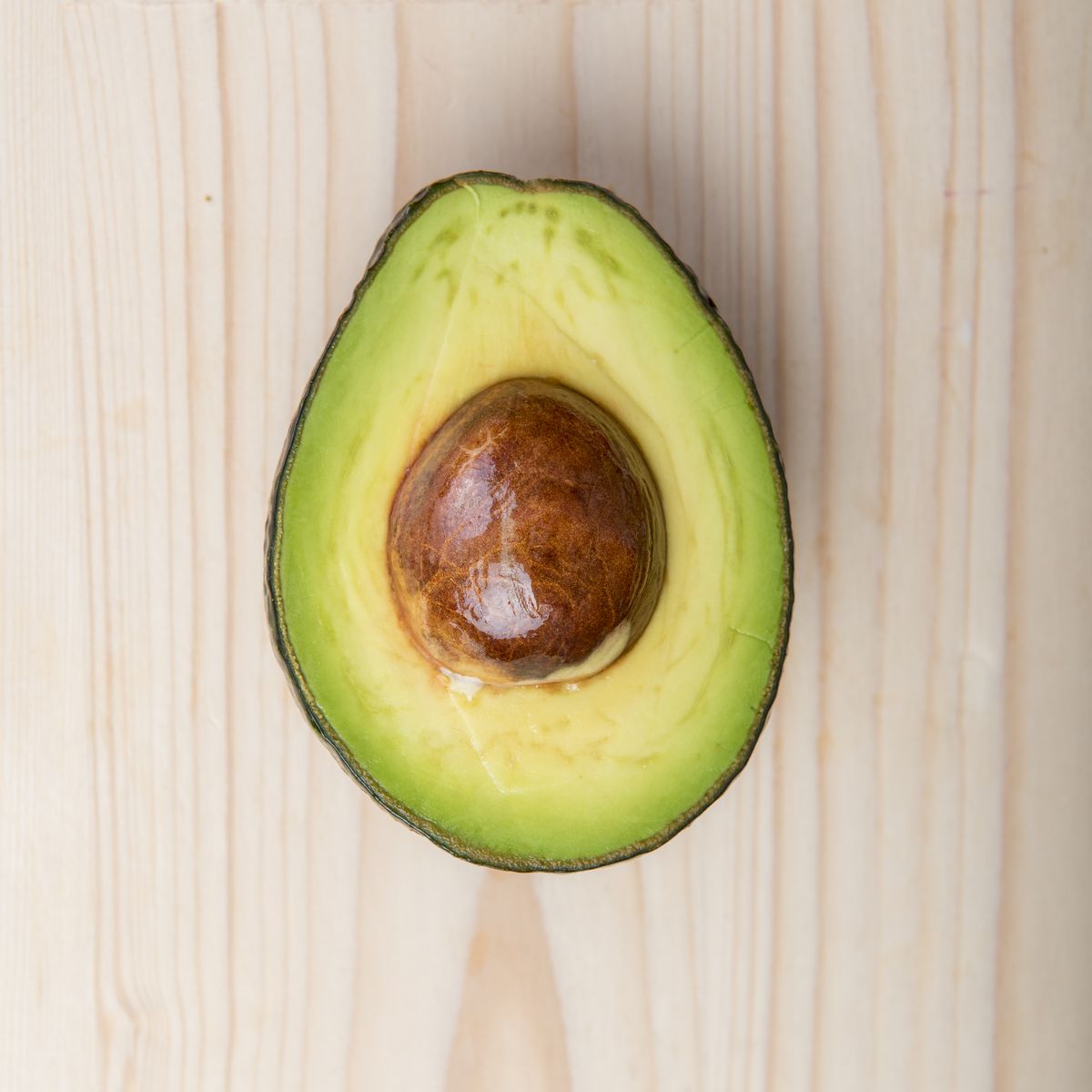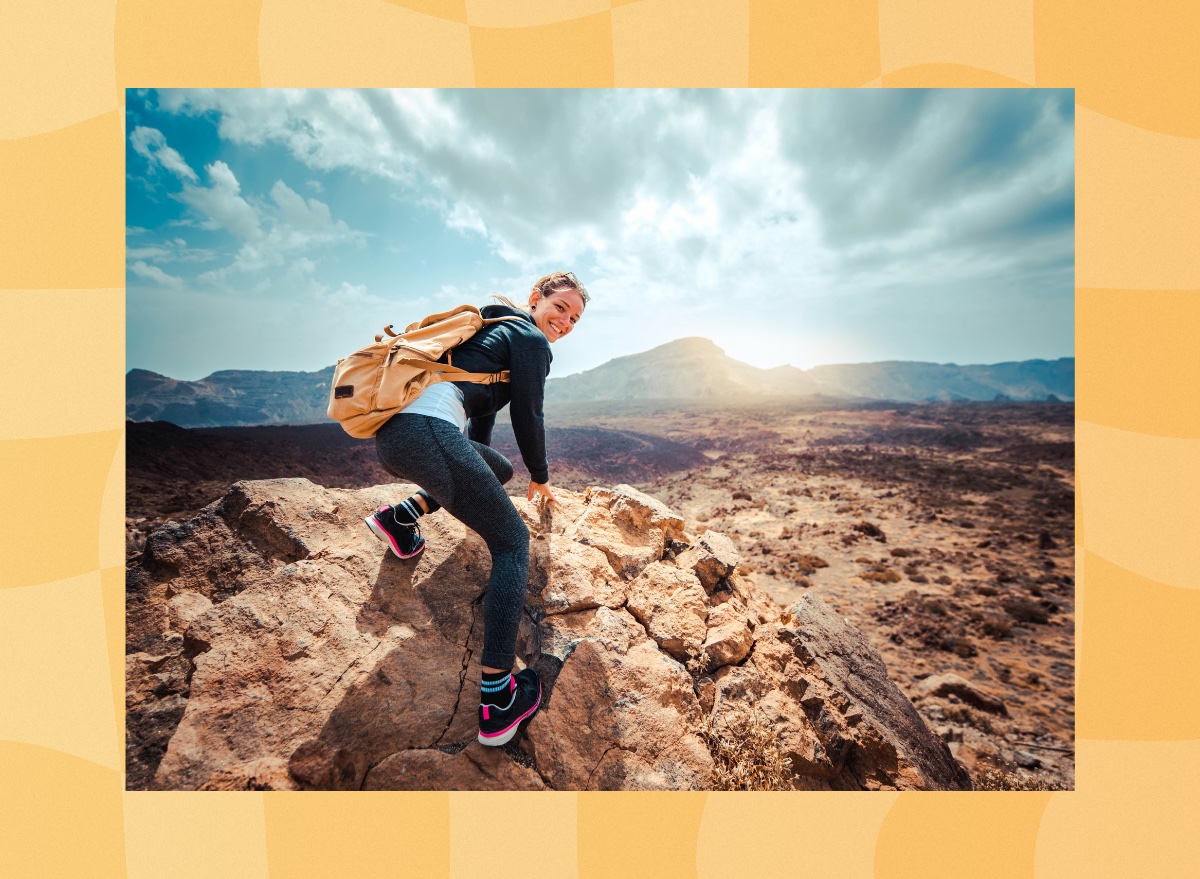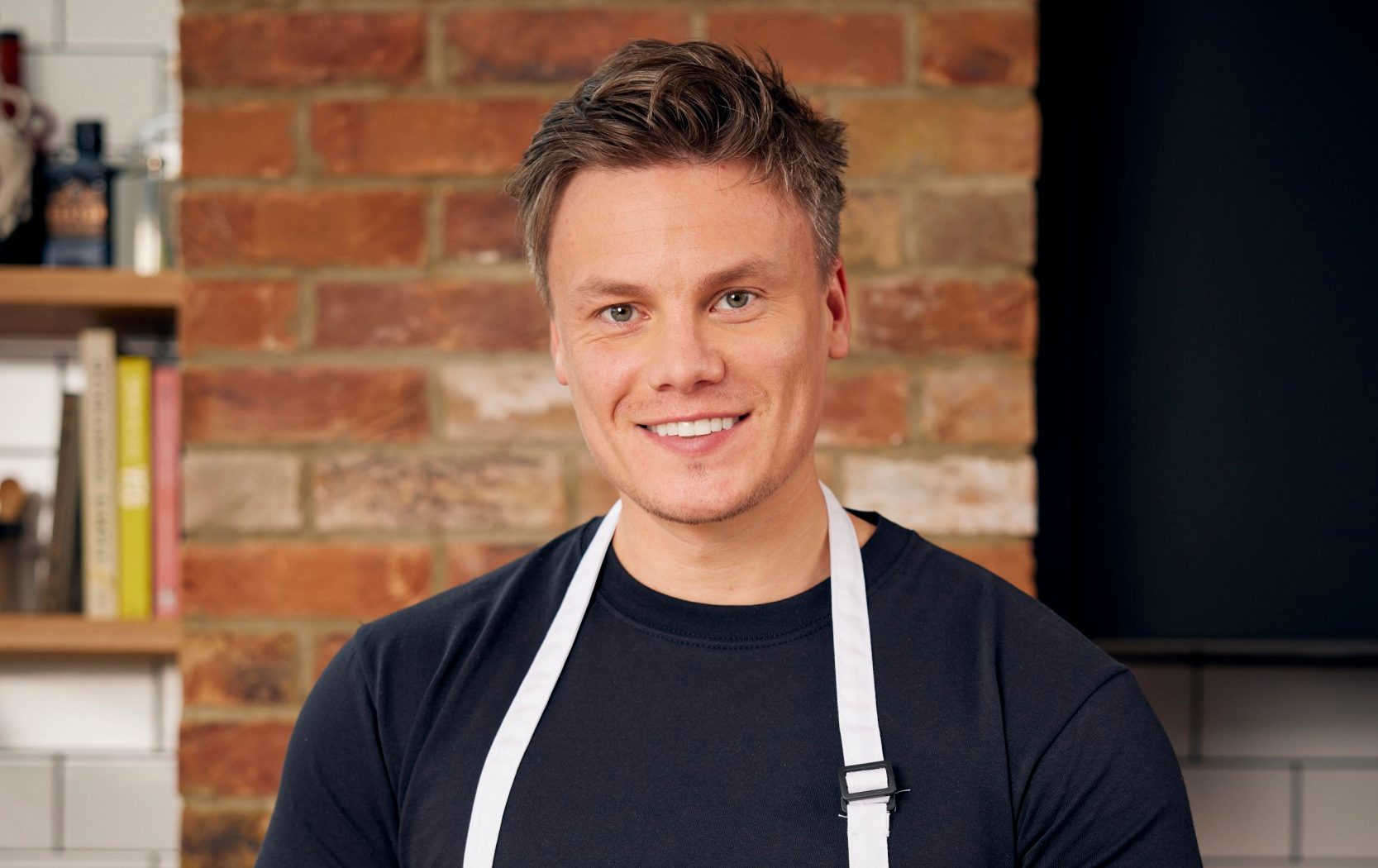
THE TURKISH GET-UP IS THE BEST EXERCISE YOU'RE NOT DOING
Lie down, stand up. That may not strike you as an especially advanced series of motions, but they're the foundation of an advanced, full-body exercise that trainers love and too many of the rest of us skip out on: the Turkish get-up. The Turkish get-up involves moving from a prone to a standing position while holding a weight over your head. And if you're looking for an exercise that will challenge your strength and your mobility, it's the perfect one to add to your arsenal.
"The Turkish get-up is a great way to train shoulder stability, mobility, and strength, since you're holding a weight in an overhead position for quite some time," says Jake Evans, a Certified Strength and Conditioning Specialist, a NSCA-certified personal trainer, and a USA Weightlifting Level 1 Coach.
The Turkish-get up targets your deltoids, shoulders, glutes, traps, hamstrings, abs, triceps, lats, and calves. And if that isn't enough, it requires core engagement and mobility to stabilize the exercise.
Overall it's a great exercise to have in your wheelhouse, and when done correctly is a very effective exercise to work the entire body. But for some reason, people often overlook this powerhouse move when they're building their gym-day routines. Or, worse, they may attempt the move, but make a few common form mistakes that put them at risk of injury and mean they're missing out on the full perks of the Turkish get-up.
So, we put together this expert-backed guide, which includes all the benefits the Turkish get-up has to offer, and how to do it properly.
Benefits of a Turkish Get-Up
It Keeps You Balanced
There are three planes of motion the body can work though: sagittal (forward and backward), frontal (side to side), and transverse (twisting). Most exercises lean toward being in one plane of motion, but the Turkish get-up allows you to activate all three planes for a more complete movement. The perks of training all three planes of movement: your body will be able to work more efficiently and with more stability and balance, and you'll reduce your risk of injury.
It Strengthens Body Awareness
"The Turkish get-up allows an individual to further develop their sense of proprioception, your body's ability to sense movement," Evans tells PS. This is because you have to control and know where your body is throughout the move. And stronger proprioception "helps to maintain and develop all body strength, balance, and coordination," Evans adds.
It's Super Efficient
If you only have time in your schedule for a 10-minute workout, you can complete three sets of 10 reps of Turkish get-ups and still work your entire body, challenging both your strength and mobility simultaneously.
It's Unilateral
"The Turkish get-up is an asymmetrical exercise, which means we are overloading one side of the body more than the other. This allows us to observe any deficiencies or imbalances," Evans says. If the move feels easier on one side or the other, that's a signal that you've got a muscular imbalance that you may want to work at correcting.
How to Do a Turkish Get-Up
The Turkish get-up may look intimidating, since it involves a long-ish series of movements. But it can be mastered when you break it down into two parts: how to get up, and how to get back down.
You may want to start by trying the Turkish get-up without weights. Once you feel comfortable performing the exercise, you can add it to your workout routine with a weight, or continue to do them unweighted as a warm-up to work on your mobility.
Here, how to do the exercise with proper form.
How to Get Up
Lie on your right side with your knees bent. If you're using a weight, have a kettlebell next to your ribs. Grasp the kettlebell with your right hand so you have a strong grip and your wrist is straight. Clasp your left hand over your right.
Roll over onto your back, with your left leg extended straight out and your right leg bent so your foot can rest flat on the floor, bringing your clasped fists - and the kettlebell, still in your right hand - toward your chest. Press the bell up with your right hand, letting your left arm drop to the floor parallel with your left leg for additional support.
Begin to shift your weight toward your left, engaging your core and pushing with your right leg to lift your right shoulder off the floor and come up on your left elbow.
From there, extend your left arm and raise up onto your left hand. Your right arm and the kettlebell should still be extended straight overhead.
Lift your hips up slightly so your left hand, left heel, and right foot are the only points touching the floor.
Then bend your left knee to sweep your left foot underneath you, so your left foot is beneath your bottom and your left knee and toes are touching the ground.
Hinge your hips, then straighten into a half kneeling position, removing your left hand from the ground.
Windshield wiper your back foot to square your hips.
Stand up so your body forms a straight line.
How to Get Down
You'll continue keeping the kettlebell raised in your right hand through this entire movement. Step back into a reverse lunge with your left leg. Let your left knee come all the way down to the ground.
Windshield wiper your left leg.
Hinge your hips again, then place you your left hand on the ground.
Do another leg sweep so that your left leg is extended straight in front of your body with the heel touching the ground.
Lower your bottom toward the ground.
Drop with control to your left elbow.
Lay back down onto your shoulders, and roll to your right side to put down the weight.
Repeat again on the same side or switch positions and do the opposite side.
Turkish Get-Up Modifications
Half Get-Up
Because the Turkish get-up is more of an advanced move, you may want to practice with a modification before you attempt the full exercise. One of the ways to do this is to perform a half get up.
With the half get-up you only complete half of the exercise, starting in the same position, but stopping the move when you roll up onto your palm (step 4 in the "How to Get Up" section). Then reverse the steps until you're flat on your back again.
Brittany Hammond is a NASM-certified fitness instructor, a fitness writer, and an avid reader. In addition to POPSUGAR, she has contributed to Livestrong.com, Well+Good, Verywell Fit, and Health.com. She has worked as a group fitness coach for the past seven years. 2024-05-22T16:51:55Z dg43tfdfdgfd











